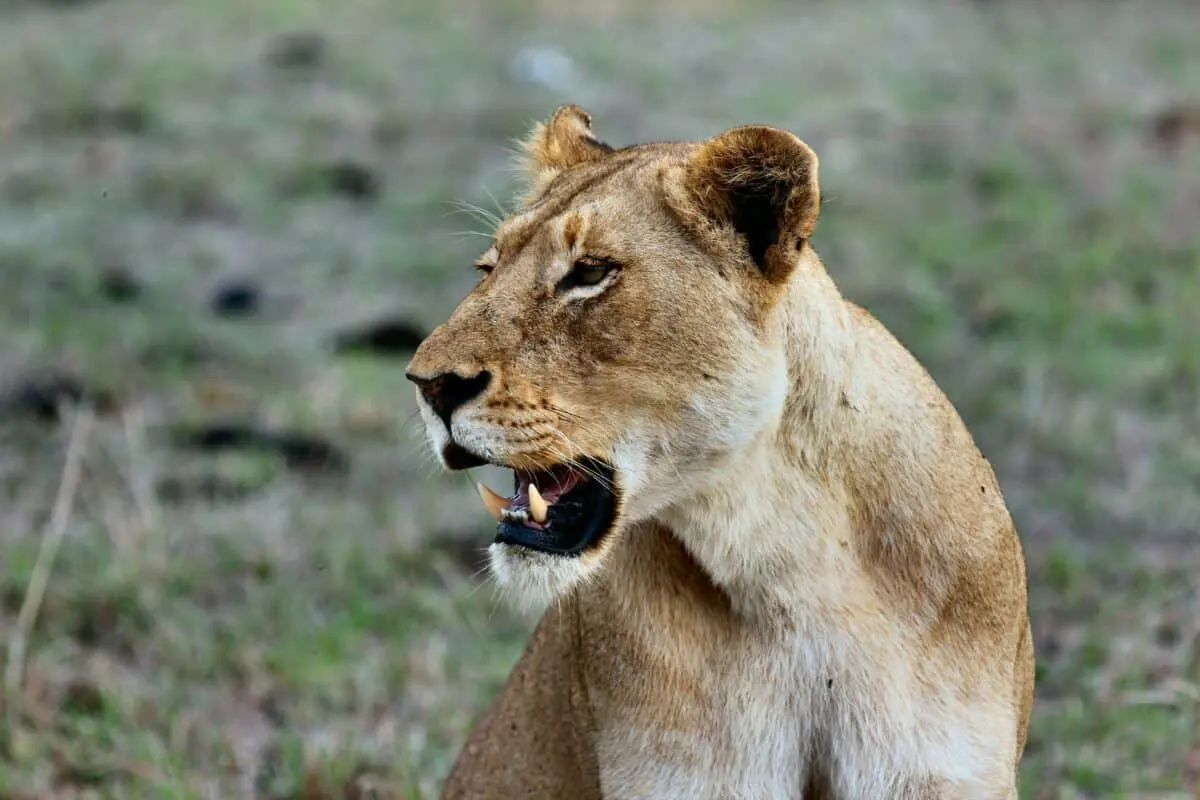Have you ever wondered how an African Lion and a Cape Wild Dog stack up against each other regarding size, strength, agility, and hunting skills?
If so, we’ll compare the two species to see who truly reigns supreme as the top predator of Africa. Read on to discover amazing facts about their behavior and unique characteristics that make them formidable opponents.
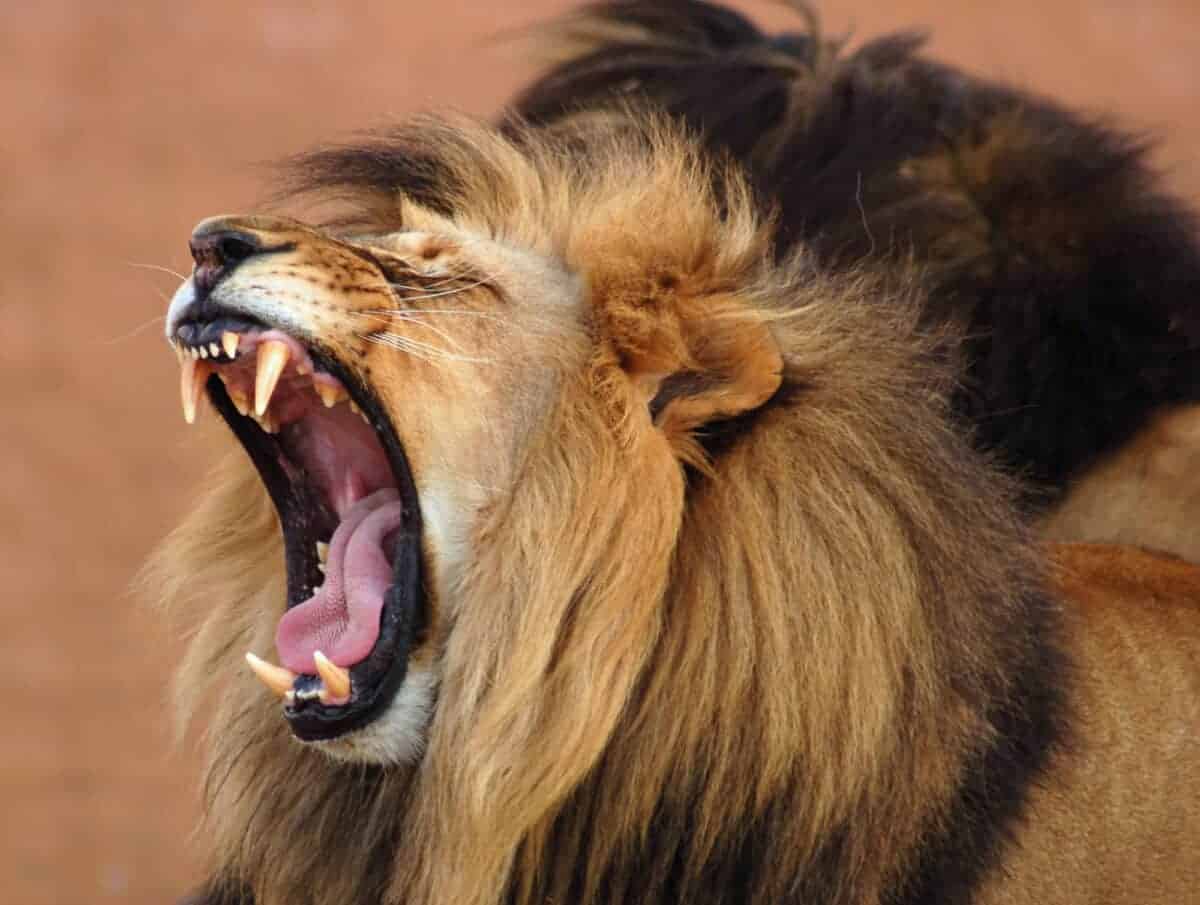
Want to jump ahead? Click below
Comparison Table
| Aspect | African Lion | Cape Wild Dog |
|---|---|---|
| Physical Appearance | Muscular build with impressive manes | Lean, agile body with a striking coat. |
| Size | Weigh up to 500 pounds. | Weigh between 50-60 pounds |
| Habitat | Open savannas and grasslands | Denser forests, woodlands, and grasslands |
| Lifestyle | Live with about 15 individuals | Live in packs of 6 to 20. |
| Diet | Hunt larger prey such as zebras, giraffes, and buffalo. | Feed on smaller prey such as antelopes, birds, and rodents. |
| Hunting Technique | Nocturnal, hunt during the night. | Diurnal, hunt during the day. |
African Lion Vs. Cape Wild Dog
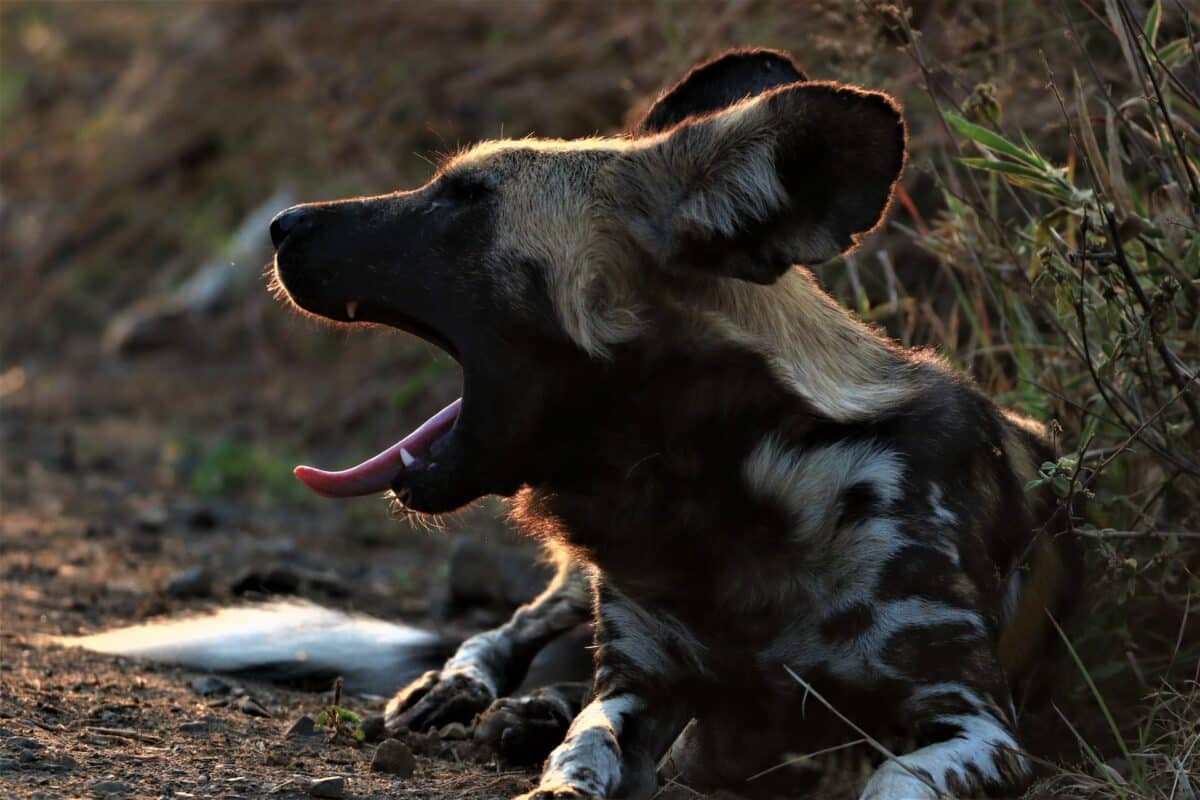
When discussing Africa’s top predators, the African Lion and Cape Wild Dog are two species that come to mind immediately. These magnificent creatures are known for their extraordinary abilities, but how do they weigh against each other?
Let’s discuss the differences and similarities between the African Lion and the Cape Wild Dog.
The African Lion
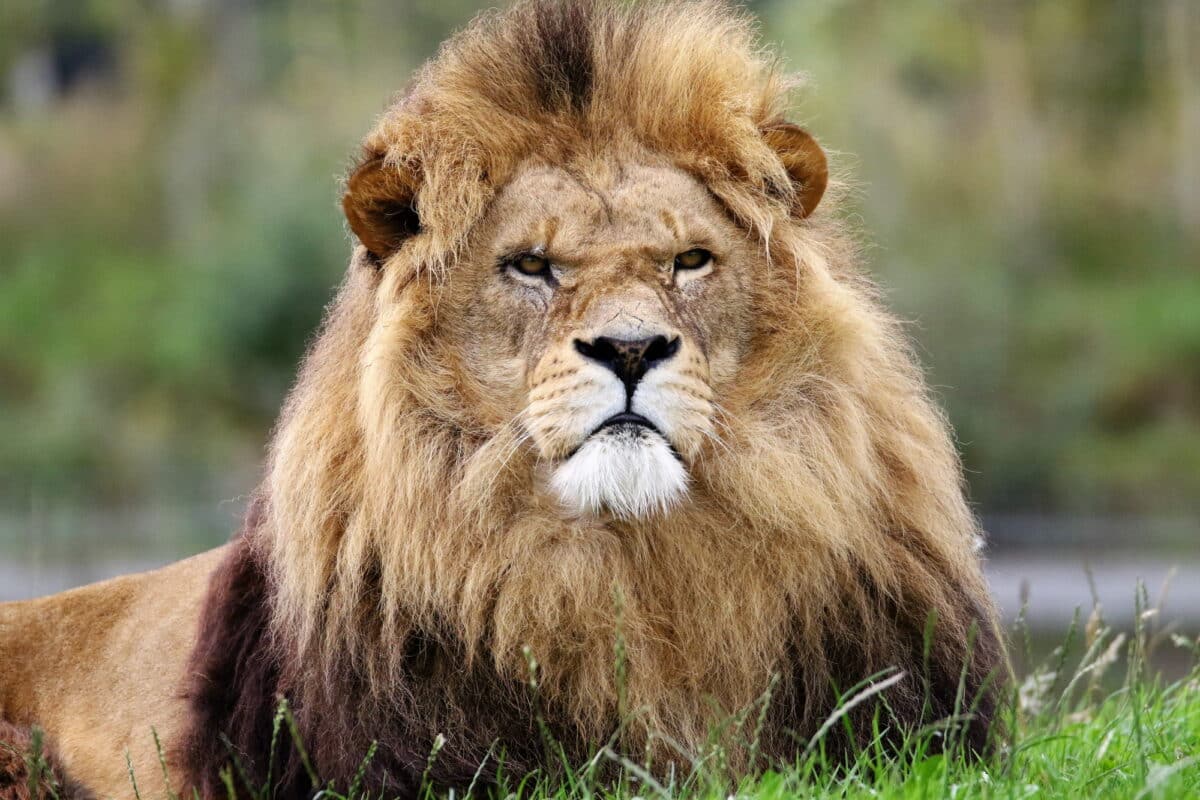
Roaming majestically across the vast savannahs of Africa, the African Lion captivates our imagination with its regal presence and awe-inspiring aura. This magnificent big cat stands as a symbol of strength, power, and resilience, captivating the hearts of nature enthusiasts and wildlife lovers worldwide.
Physical Appearance
The African Lion, scientifically known as Panthera leo, is the largest and most iconic carnivorous mammal in Africa. Sporting a robust and muscular build, it boasts a magnificent mane that sets it apart from its counterparts around the globe.
However, the male lions proudly flaunt their impressive manes, which vary in color, length, and density, ranging from golden to dark brown. The manes serve not only as a distinctive feature but also as a display of dominance and prowess, commanding respect and attention in the animal kingdom.
Habitat
The African Lion predominantly roams across sub-Saharan Africa’s huge grasslands and open savannahs. These expansive territories provide the perfect balance of prey, water sources, and vegetation, allowing the lions to thrive in their natural habitat.
However, they are also adaptable creatures known to inhabit a variety of ecosystems, including dry woodlands, scrublands, and even semi-desert regions. Their ability to adapt to different environments is a testament to their resilience and survival instincts.
Diet
The diet of the African Lion is that of a formidable predator. As apex predators, they are skilled hunters and primarily prey upon large herbivores like zebras, wildebeests, buffalo, and gazelles.
Their cooperative hunting strategy, often seen in pride consisting of multiple lionesses and a dominant male, allows them to strategize and take down prey that would otherwise be challenging for solitary hunters.
The hunt is an exhilarating spectacle, with the lions using their powerful muscles, sharp claws, and strong jaws to overpower their victims. Their diet ensures they maintain their physical strength and sustains their impressive physique.
Social Behaviour
Beyond their physical prowess, the behavior of the African Lion is intriguing and multifaceted. Within the pride, lionesses form the backbone of the social structure, cooperating to raise cubs, protect the territory, and hunt for the group. The dominant male, often recognized by his impressive mane, safeguards the pride and ensures their safety.
While lions are typically seen as mighty and fearsome creatures, they also display moments of tenderness and affection within their family units. They groom one another, nuzzle their cubs, and engage in playful behavior, strengthening the bonds that hold the pride together.
Communication Skills
Communication is an essential aspect of lion behavior. They utilize a range of vocalizations, including roars, growls, grunts, and moans, to communicate with one another and assert their dominance. The iconic roar of a lion reverberating across the plains symbolizes their might and serves as a way to establish territory and warn intruders.
The Cape Wild Dog
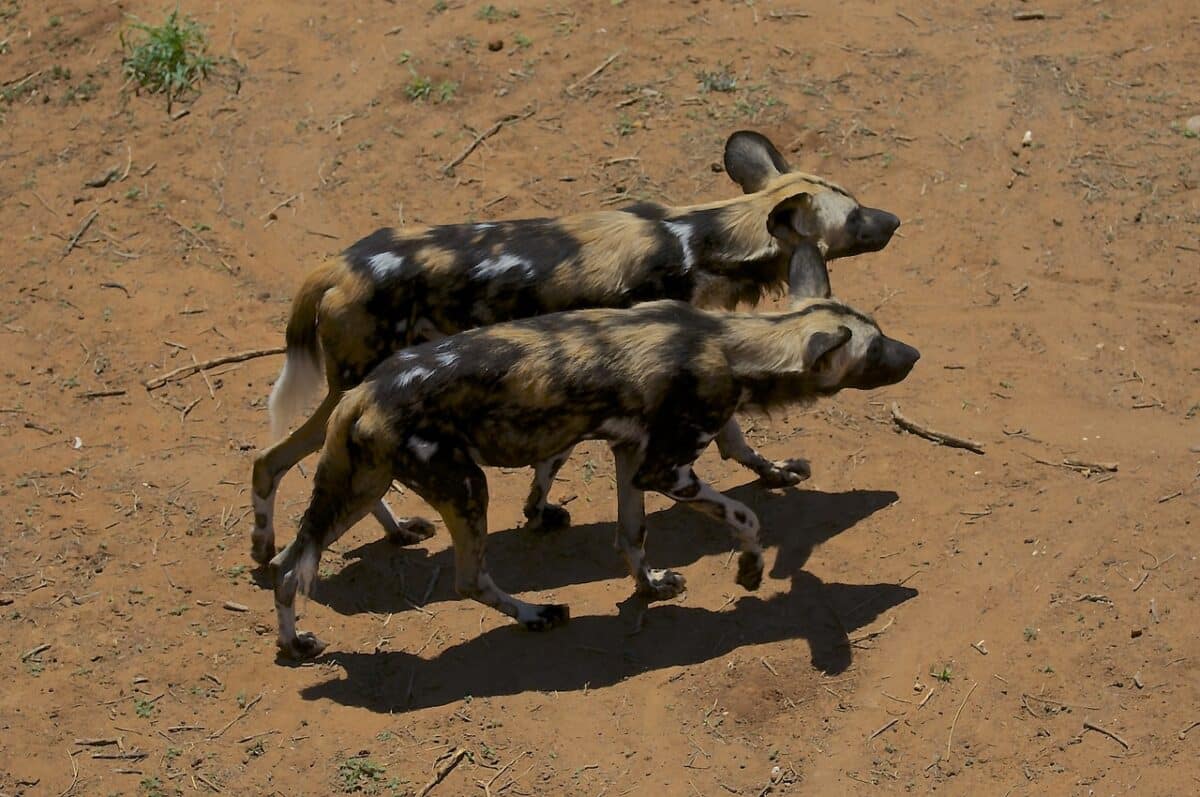
In the realm of extraordinary creatures, the Cape wild dog is a remarkable species that captivates scientists and wildlife enthusiasts. This magnificent creature is a true marvel of nature’s design with its distinctive physical appearance, diverse habitats, special diet, and intriguing behavior.
Physical Appearance
Regarding visual appeal, the Cape wild dog is a true masterpiece. Its striking coat is a symphony of colors, featuring various shades of brown, black, and white, all intricately arranged in a mesmerizing pattern unique to each individual.
The irregularly shaped patches adorn its lean, agile body, providing excellent camouflage within its natural surroundings. The Cape wild dog’s keen, almond-shaped eyes radiate intelligence and an unwavering spirit, adding to its allure as a charismatic and beautiful creature.
Habitats
The Cape wild dog is an adaptable species that can be found in a diverse range of habitats. It thrives in open grasslands, savannas, and even forested areas, making it one of the most versatile predators in its ecosystem.
From the sun-drenched plains of the African savannah to the dense woodlands of the Cape region, this agile predator has successfully established itself in various environments, displaying its incredible ability to adapt and survive in the face of changing landscapes.
Diet
Regarding dining preferences, the Cape wild dog is anything but picky. With a diverse diet, these formidable hunters are skilled opportunists, targeting a wide range of prey to satisfy their voracious appetites. They feed on small to medium-sized ungulates such as impalas, gazelles, and duikers.
However, their hunting prowess is not limited to land animals alone; they are known to feast on birds, rodents, and even fish when the opportunity arises. This adaptability in the diet ensures their survival even during challenging times when their preferred prey is scarce.
Behavior
The Cape Wild Dog’s behavior is characterized by its intricate social structure and remarkable cooperative hunting strategies. These charismatic creatures exhibit strong familial bonds and a well-defined hierarchy.
Each pack member has a role, with dominant individuals leading and taking responsibility for the group’s welfare. Their cooperative hunting techniques are a sight to behold, as they employ teamwork, communication, and remarkable coordination to bring down prey much larger than themselves. Moreover, their synchronized movements and strategic planning during hunts showcase their intelligence and remarkable social dynamics.
Explore the top 10 facts about Cape Wild Dogs here!
Differences Between The Hunting Skills Of The Two Species
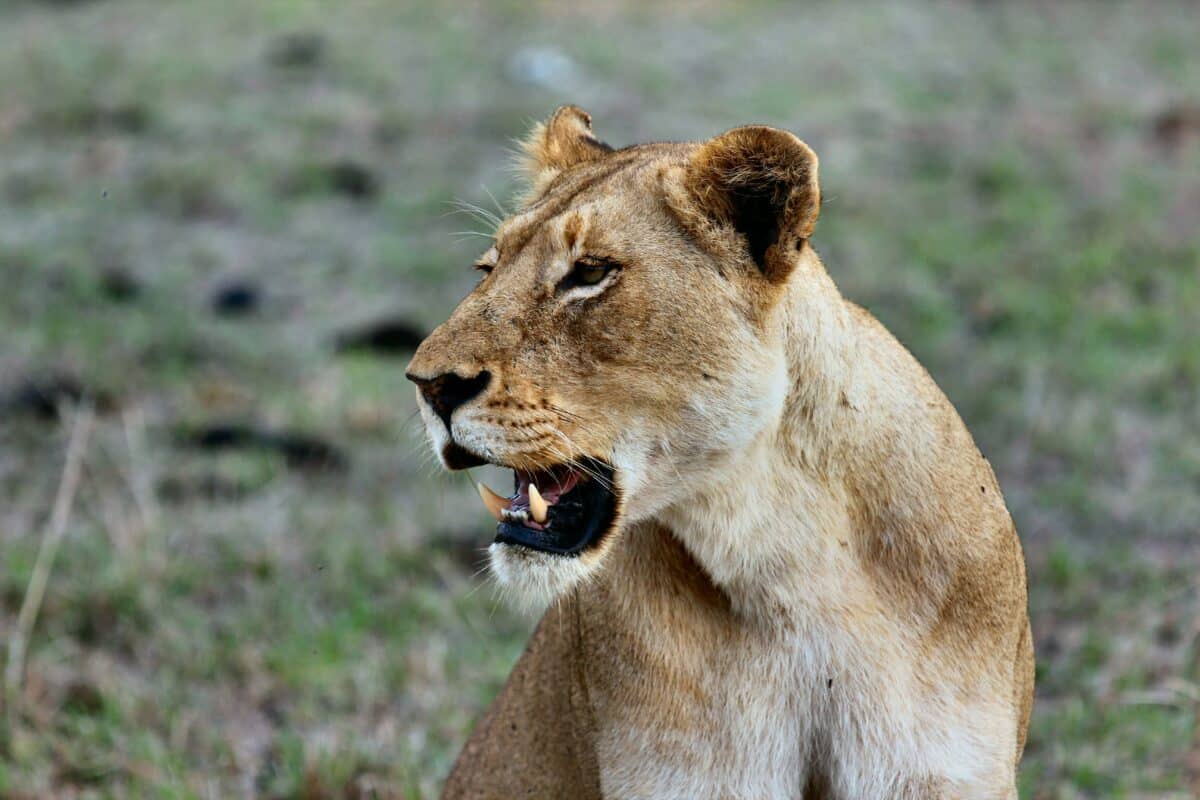
The African lion and the Cape wild dog are both fierce predators in the wild, but their hunting methods couldn’t be more different. The lion is known for its strength and powerful jaws, which can take down large prey such as zebras and buffalo. They typically hunt in groups, stalking their prey before launching an ambush attack.
In contrast, Cape wild dogs hunt in packs and are renowned for their speed and agility. They can run up to 44 miles per hour and chase down prey such as antelopes and smaller mammals. Working as a team, they use their superior numbers to surround their prey, attacking from all angles until exhausted and ultimately killed.
Coexistence Of Both Species In The Wild
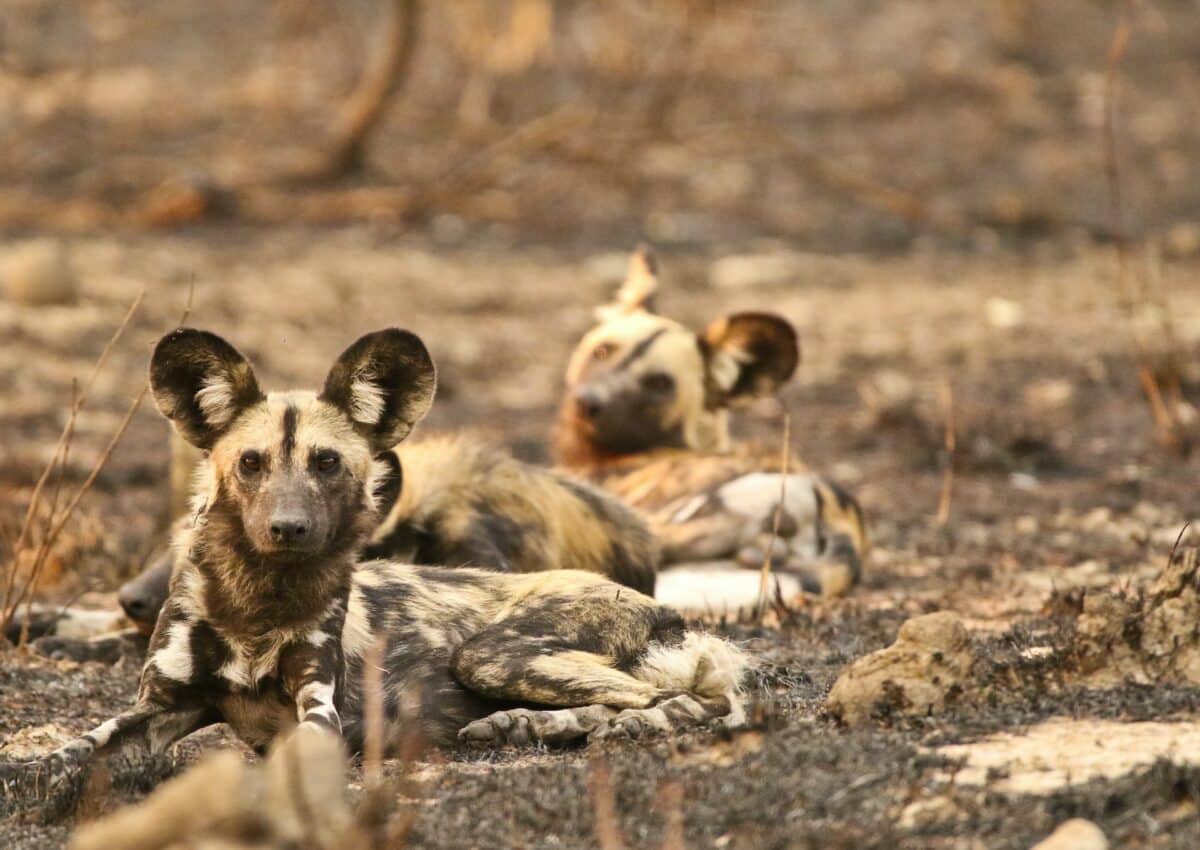
The African lion and the Cape wild dog can coexist despite their differing hunting skills. They often hunt in the same areas and sometimes even share kills. The key to this peaceful coexistence lies in each species respecting the other’s space and territory.
Both species tend to establish their territories to avoid confrontation and competition. While the African lion prefers open plains and savannas, the Cape wild dog prefers wooded and grassy areas. They can coexist without conflict by staying out of each other’s territories.
Conservation Efforts To Protect African Lions And Cape Wild Dogs
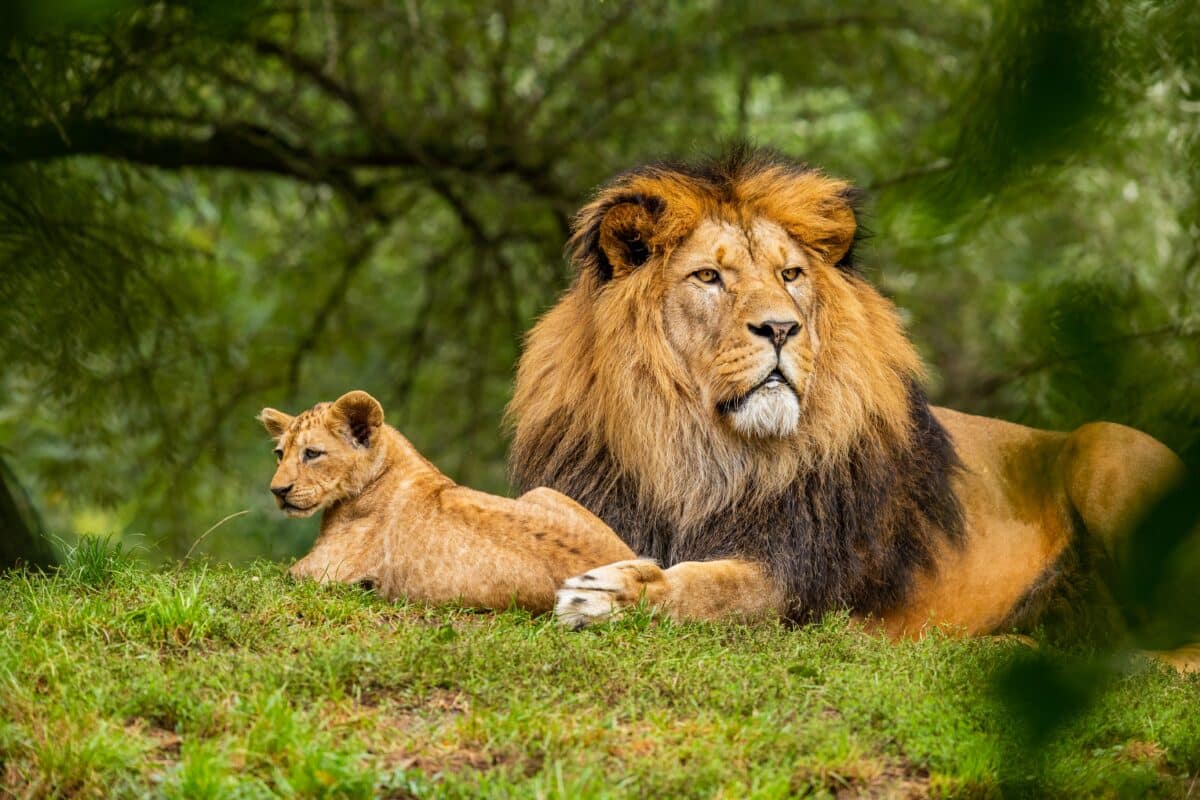
Like many wild species, African lions and Cape wild dogs face several threats to survival. Habitat loss, poaching, and hunting have all contributed to declining numbers, putting both species at risk of extinction.
Conservation efforts have been made to protect African lions and Cape wild dogs to combat these threats. These include increasing protected areas and enforcing hunting bans. Additionally, educating local communities about the importance of these species to the ecosystem.
By working collectively, we can help ensure that both species continue to thrive in the wild for generations.
Key Points
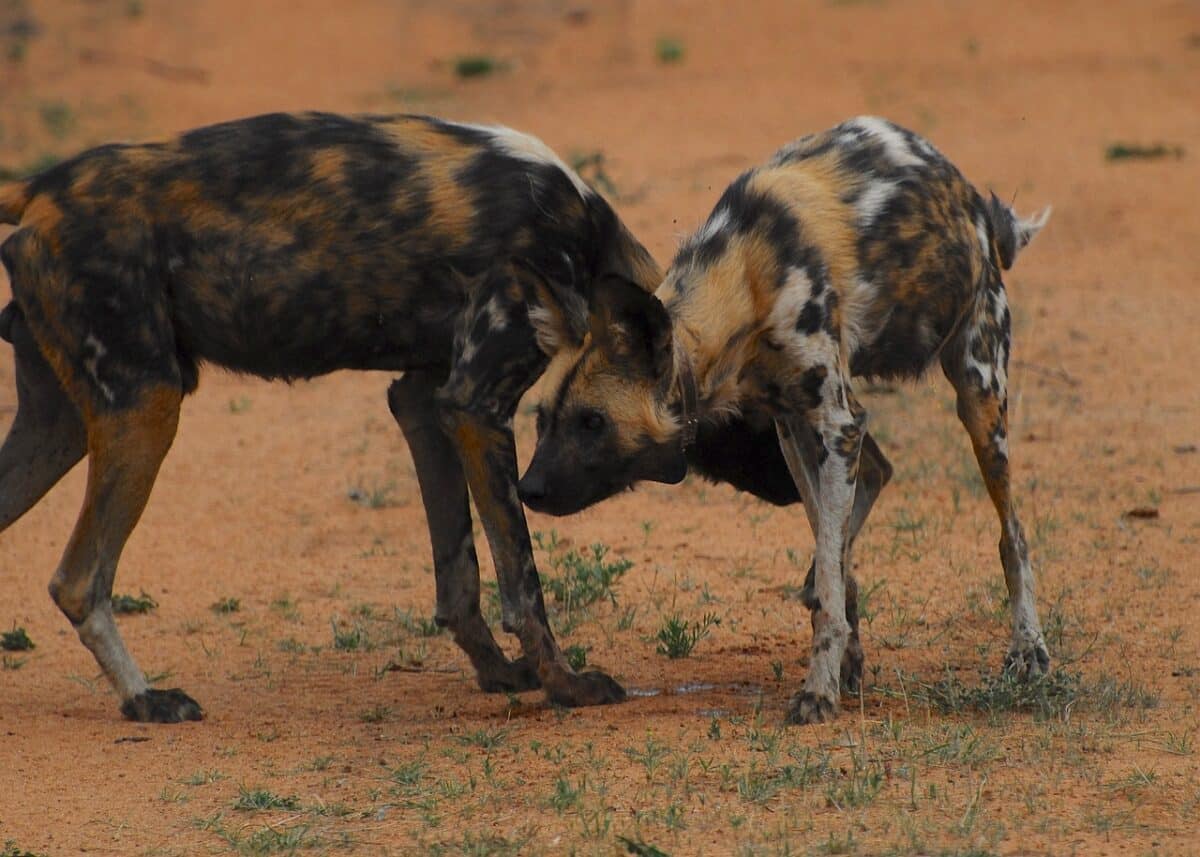
| Roaming majestically across the vast savannahs of Africa, the African Lion captivates our imagination with its regal presence and awe-inspiring aura. |
| In the realm of extraordinary creatures, the Cape wild dog is a remarkable species that captivates scientists and wildlife enthusiasts alike. |
| The African Lion predominantly roams across sub-Saharan Africa’s vast grasslands and open savannahs as they provide the perfect balance of prey, water sources, and vegetation. |
| Regarding dining preferences, the Cape wild dog is anything but picky. With a diverse diet, these formidable hunters are skilled opportunists, targeting a wide range of prey to satisfy their voracious appetites. |
| Conservation efforts have been made to protect African lions and Cape wild dogs to combat their extinction threats. |
Wrapping Up with the African Lion Vs. Cape Wild Dog
In summary, the African lion and the Cape Wild dog are two fierce predators that thrive in the African savanna. While both are skilled hunters, their hunting techniques, social behaviors, and physical attributes differ significantly. However, we can only hope that conservation efforts will continue to protect these magnificent creatures and allow them to roam freely in their natural habitat.
Thanks for following along with me! I hope you enjoyed reading about these two entertaining animals. African Elephant vs. African Buffalo, Discover The Fer-De-Lance Pit Viper Bite, and American Black Bear vs. Tasmanian Devil is next.
- Bald Eagle Family Expand Their Nest In California - April 24, 2024
- Firefighter Saves Abandoned Kittens Found Cuddling In Hoses - April 24, 2024
- Dolphins Get High Playing Catch With A Pufferfish - April 24, 2024

